How to cook dried hominy corn or mote – from scratch
This is a basic recipe and instructions for cooking dry hominy corn from scratch. Hominy is known as mote in Ecuador, it’s called “maíz peto” in Colombia, and “maíz pozolero” in Mexico and Central America,
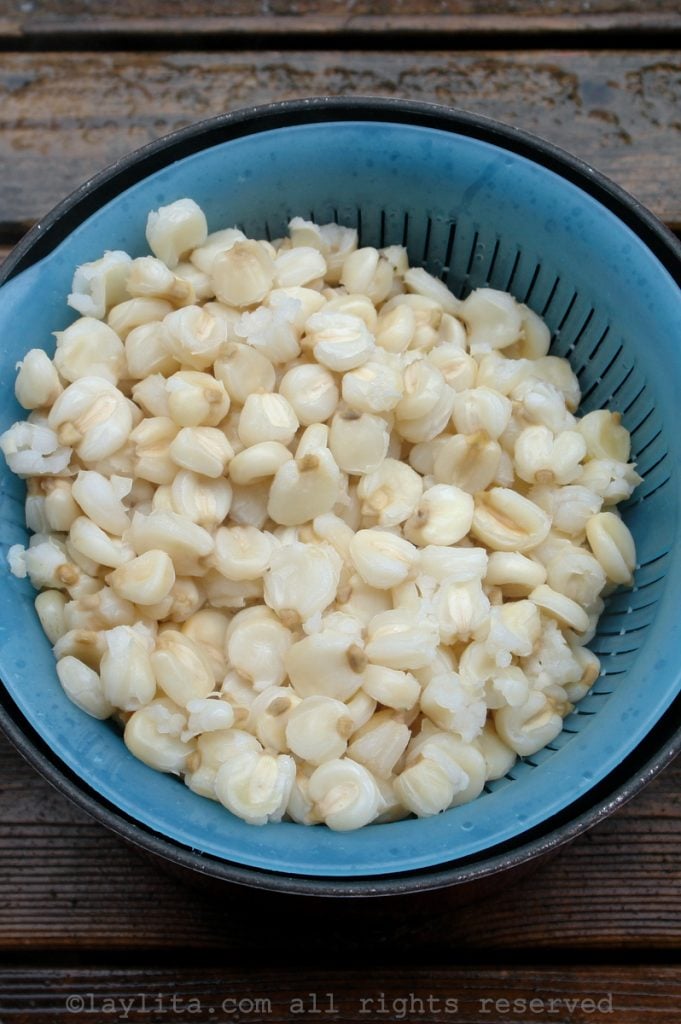
Mote corn or hominy, is made from dry corn that is “peeled” by soaking and cooking it with calcium oxide, also known as cal in Spanish or quicklime in English. My mom used to make mote using dry unpeeled corn, she had this huge pot and would put it on a wood burning stove in the little hut (which she called her fabrica or factory) next to our house.
The process to “peel” the dry corn would take a whole day, once the corn was peeled she would boil it until it was puffy and soft. The type of corn that grows in the Andes – actually there are several different varieties of corn -, but the most common type is different than the one found in the US (and Europe),the kernels are larger, drier and not as sweet. I was so shocked at how sweet American corn was the first time I tried, I was sure someone added sugar to it, and while I’ve grown to like sweet corn it is still a challenge to adapt certain Ecuadorian corn based dishes using local corn, but it works out.
In the late 90’s, when I moved to the US, it was very hard to find mote or hominy and the only kind I could find was canned and already cooked,which was convenient because you just had to drain it, rinse it and use it, however the flavor of freshly cooked mote was missing.
Recently I discovered that it is possible to find the dried mote – which has already been “peeled”-and is ready to be boiled, the corn has to soak overnight and does take a few hours to cook, but it is so worth it! After eating this way it is very hard to go back to the canned version – but I still keep a can of hominy on hand just in case I have a last minute craving or need it quickly.
You can find the dry peeled corn at some of the Latin grocery stores, it is called Maiz Mote Pelado and comes in 1lb bags – usually next to all the dry beans/peas – you soak it overnight and boil it (just like you would with dry beans).
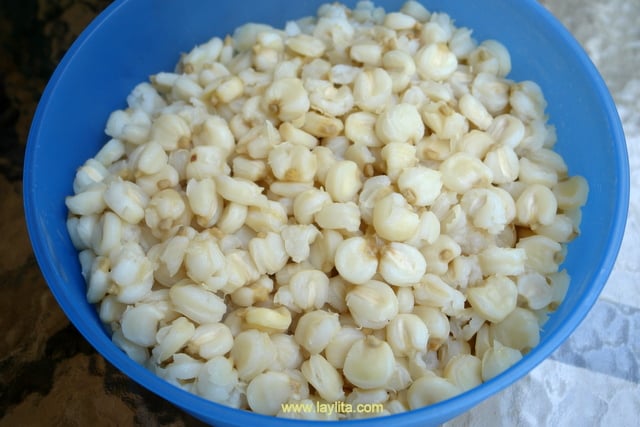
Hominy is a great side dish, in Ecuador it is frequently served as a side to a lot of different meat dishes; simply add some salt (if needed) and it is ready. If you want to give the hominy a little bit more flavor you can also make a quick refrito (onions, garlic and other spices sautéed in oil or butter) and mix it with the hominy. A classic dish in the Andean highlands is mote pillo, a dish of hominy and eggs, it is one of the best breakfast dishes.Hominy is also added to soups and can also be ground to make dough for empanadas or tamales.

How to cook hominy corn {Ecuadorian mote}
Ingredients
- 1 lb dried mote or hominy corn
- Water
- Salt
Instructions
- Soak the dried mote corn overnight
- Rinse it well, place it a large pot with plenty of lightly salted water and boil over medium heat until the corn is soft and starts to “pop”,about 2-3 hours, stir occasionally and add additional water if needed.
- Drain and cool down, can be served plain as a side dish or used as a component for other dishes.
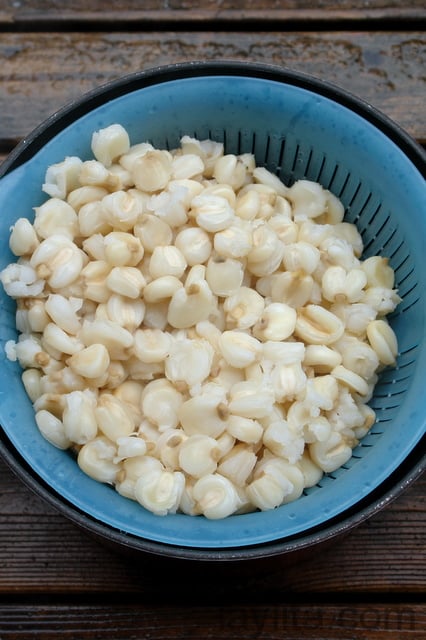
Step by step preparation photos for cooking hominy corn or mote at home:
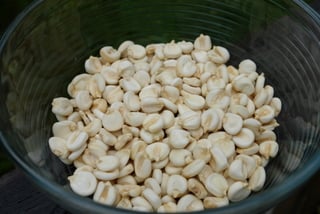
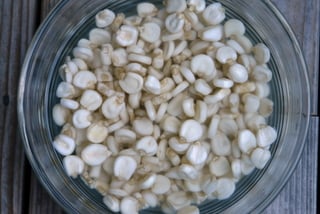
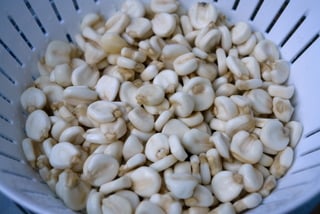
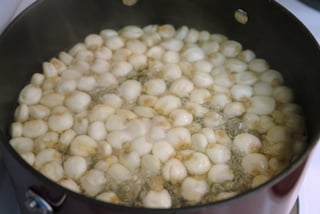
Some of my recipes that use hominy or mote:
Mote refrito con hornado or hominy with pork gravy
Caldo de patas or cow feet soup
Llapingachos de mote or hominy patties stuffed with cheese or meat

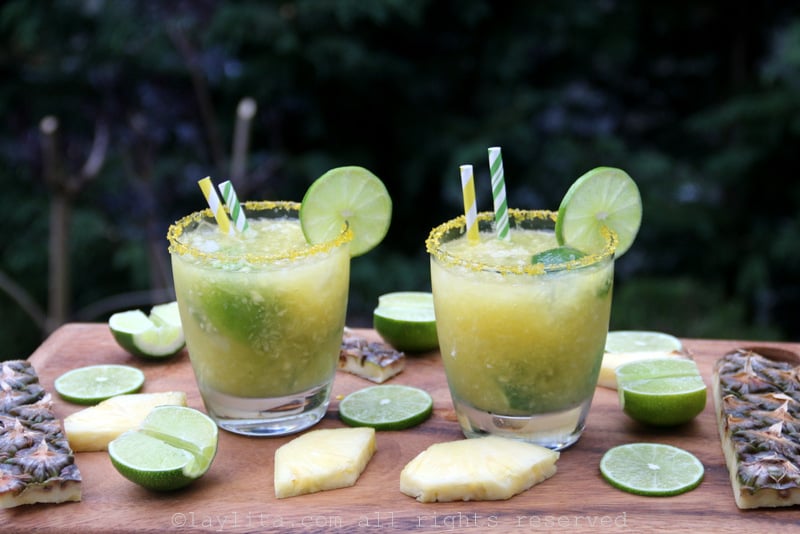
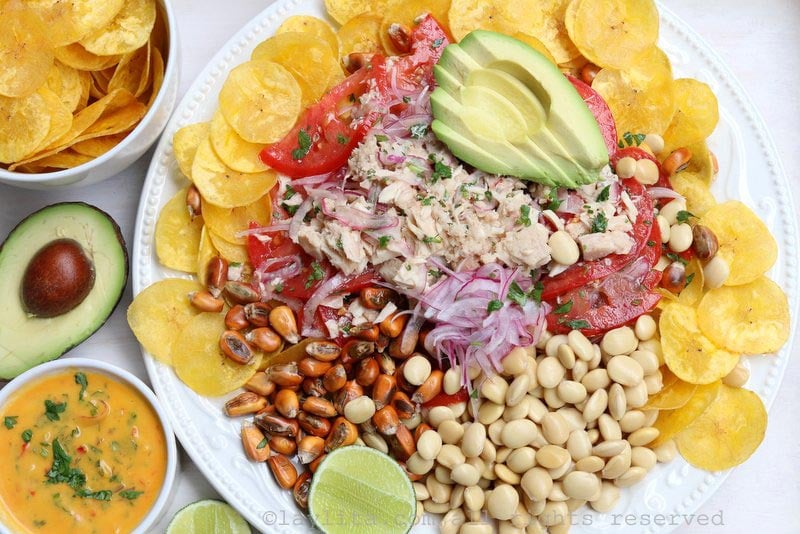
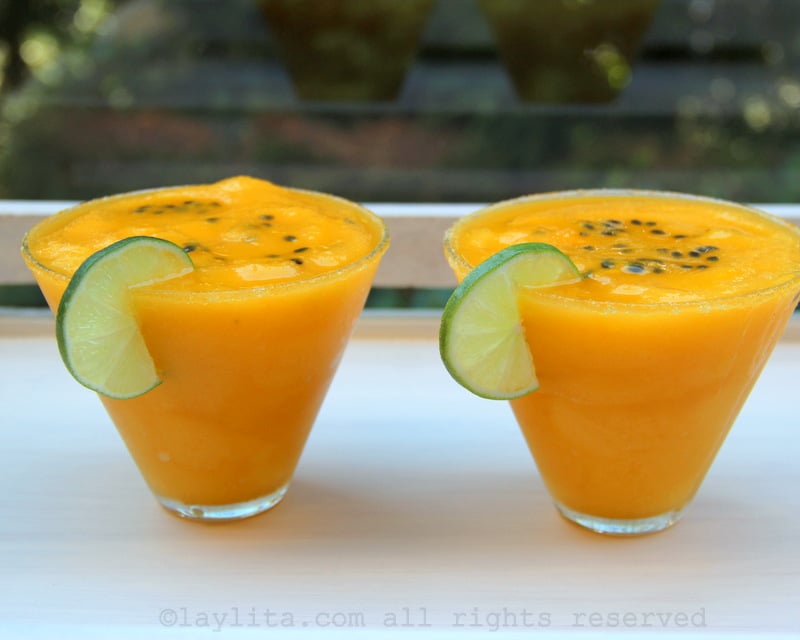
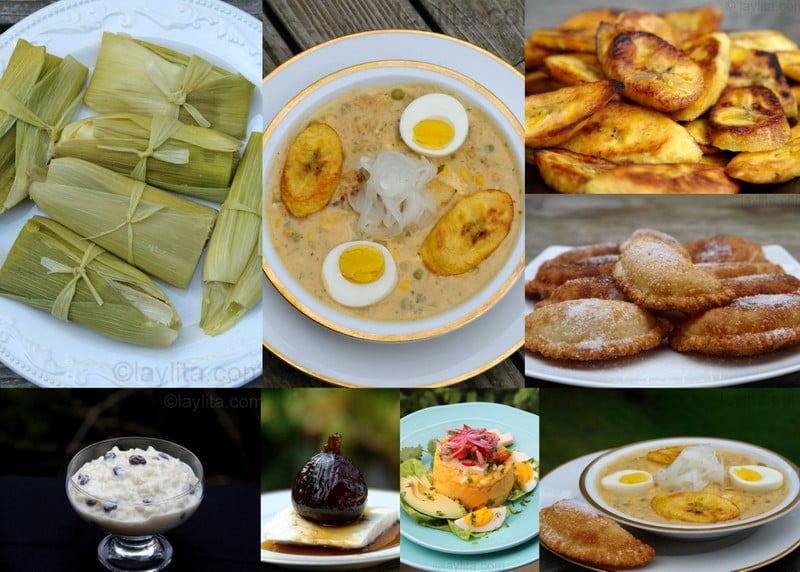
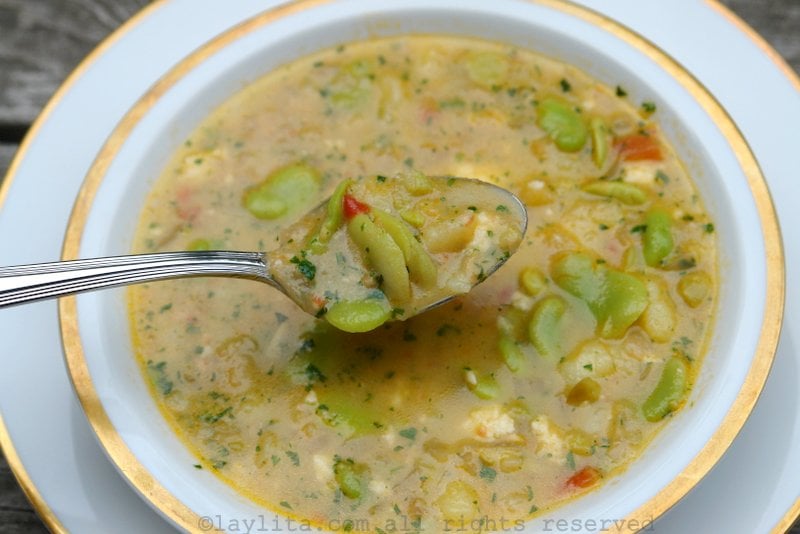
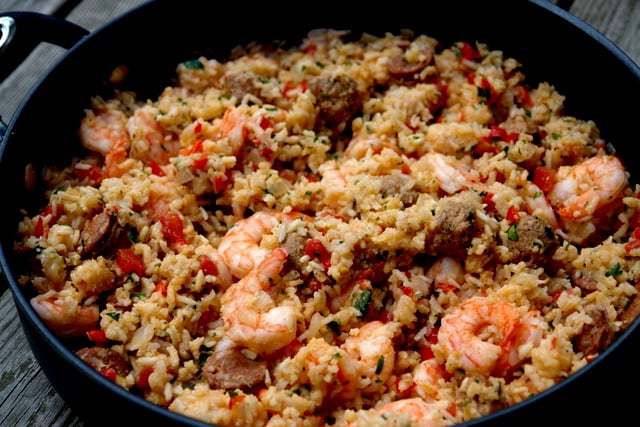
Laylita is right… the more starchy corn that is indigineous to Central/South America really makes a difference. North American corn is too sweet and if you tried to make humitas, tortillas, or tamales with it, you would end up hating it.
PS – If you want to learn how to make corn tortillas or tamales, rent a book by Diana Kennedy or Patricia Quintana from the library. You will never go back to storebought again!
Hi Laylita,
Thanks so much for your wonderful recipes!
Your point about sweet corn is right on. I have not spent a lot of time in Ecuador, but have an ex-boyfriend from there and when I visited it was the corn festival. I have looked so hard to find proper choclo in the States (I live in New York City) but have only been able to find a couple of frozen brands – they’re OK but not the same as fresh.
Do you know of anywhere to get fresh Andean corn in the U.S.?
I was also very excited to see your recipe for humitas (another corn festival memory) and look forward to making it soon!
Thanks!
Thank you!
Thanks so much for the delicious recipes and tips on cooking rice. My husband lived in Ecuador for a few years and is always talking about the arroz con menestra–rice and beans–that he loved there because of the flavor of the beans. I searched your site and can’t find anything like that. I’d love to see a recipe for it to try to make it for him. Thanks again!
Hi Catherine – I have a recipe for arroz con menestra, but using lentils instead of beans, the menestra with beans is very similar, same vegetables and spices. My mom makes a great menestra de porotos (beans), I’ll share the recipe one of these days.
How interesting. I’ve always wanted to try hominy, but I have yet to find it here.
It is rice to us I guess. In India, most of the side dishes are had with rice or wheat tortillas.
So where do you get mote in Seattle? I want to make pozole for the first time, and wanted to try it with the dried corn. Or, do you recommend the Mexican hominy? I found a recipe on Epicurious.
Thanks,
Hi John – There a couple of places that have mote in Seattle, the first one is the El Mercado Latino in Pike Place Market, another place is La Espanola in Bellevue. The mote I used was the Goya brand but I also saw there is a Peru Foods brand (haven’t tried that one yet). I’m sure there are other Latin grocery stores in the Seattle area but those are the ones I usually go to.
I’ve never made pozole so I’m not sure which is better to use, but based on taste comparison of the canned Mexican hominy vs. boiling the dry peeled corn I prefer the taste of the latter. Also, there is an Ecuadorian soup made with mote and pork, called mote pata, for that soup the mote is usually added already cooked (so you would either boil and cook the mote separately or use the canned version), I’ll try to get that recipe posted soon, it’s a great winter soup.
I love that you share some of your secrets of where to find things there in the states. That is good information for when I am there and need things like this! Been missing your posts! They are always so beautiful and delicious!
I wish I could find this speciality here!
Cheers,
Rosa
Thank you for this! I need to start trying different ways to prepare mote because my husband is tired of eating mote pillo, lol. I love it though. We make our mote in the pressure cooker because it’s much faster that way.